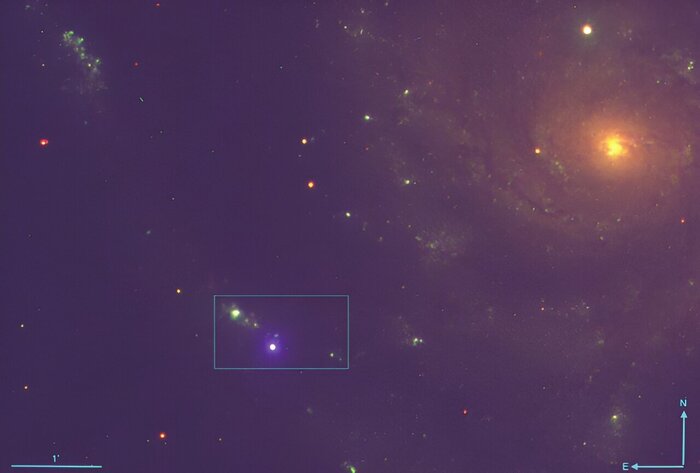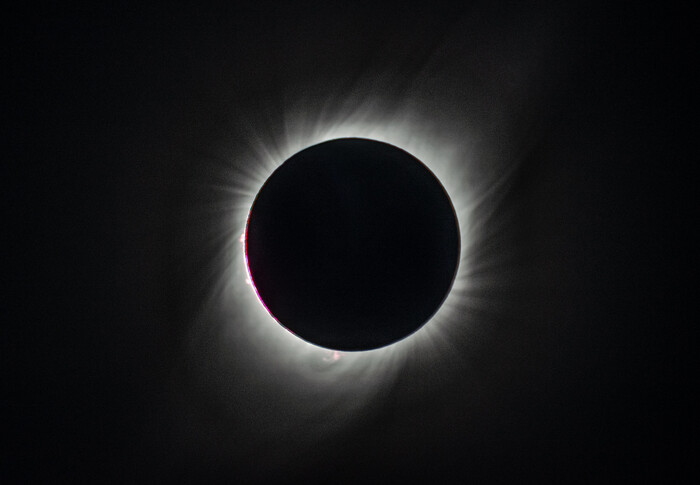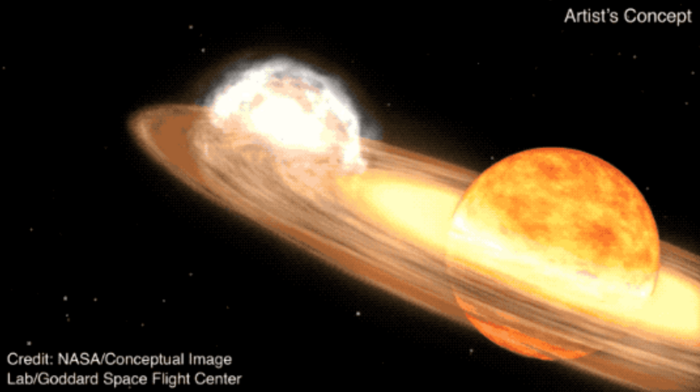Icon: enlarge
Evening sky in September: The planets Jupiter and Saturn are moving closer and closer together
Photo: imago images
For astronomers and stargazers, the Christmas season is especially exciting this year.
In the evening sky they watch a rare spectacle.
The chase of two planets can be seen there, and you don't even need a professional telescope to follow it.
Jupiter and Saturn, the two gas giants in our solar system, have been racing each other since summer.
Every evening, when it gets dark, you can see that they come a little closer in the sky.
Jupiter, the largest planet with a diameter of 143,000 kilometers and the second brightest after Venus, is getting closer and closer to the rings of Saturn.
On December 21st, a few days before Christmas Eve, the time has finally come.
Then the two are so close together that one could easily mistake them for a large, very bright star with the naked eye.
Only a fifth of the full moon diameter separates them.
You could almost think it was the poinsettia.
And indeed, astronomers have been concerned for centuries whether it might not have been a rare planetary constellation of Jupiter and Saturn that, according to the story, could have led the three kings to the inconspicuous stable in Bethlehem around the birth of Christ.
Experts speak of a so-called major conjunction when the two meet.
It results from the different orbital times of the planets.
Jupiter needs about twelve years on the orbit closer to the sun for one lap around the sun, Saturn further out more than 29 years.
Every 20 years or so, from Earth, it looks as if the two planets are getting very close.
But of course they are only on a common line of sight from us and are still far apart on their orbits behind the asteroid belt (see graphic below).
Also on December 21st, Saturn will be about twice as far from Earth as Jupiter.
The German Aerospace Center states its distance from the earth to be around 1.6 billion kilometers.
Even in ancient times, star gazers noticed a difference between the fixed stars in the sky and the moving planets.
Astronomers in ancient Babylon had already occupied themselves with the fact that these celestial bodies sometimes take strange paths and occasionally overtake each other.
At that time the observation of the stars was reserved for the priests.
And although they assumed a false worldview in which a rigid earth was the center, they were able to predict planetary movements quite precisely and calculate them mathematically.
But above all the reason for the phenomenal planetary circles, the so-called opposition loops, in which the planets seemed to run backwards for a short time and then switch back in the right direction, confused them.
Large conjunctions of Jupiter and Saturn were observed even then.
In some constellations, if three close encounters between Jupiter and Saturn took place in one year (triple major conjunction), the stargazers even feared a bad omen - astronomy and astrology were one and the same guild at that time and they should remain so for a very long time.
Icon: enlarge
Schematic representation of this year's major conjunction
Photo: Kraichtal Observatory
For the planetary loops, the astronomers devised theories that seem adventurous from today's perspective.
Aristotle, the great Greek thinker and advocate of the geocentric view of the world with the earth at its center, believed in small circular orbits, so-called epicycles, on which the planets turned extra rounds, so to speak.
It's like a carousel with a couple of gondolas still turning on a disc.
With his standard work, the "Almagest", Claudius Ptolemy cemented this theory for centuries shortly after the birth of Christ.
It was only the astronomers of the Renaissance who shook this model and ushered in the change towards our heliocentric worldview, in which the sun is at the center.
The greatest achievement was Johannes Kepler with his three laws about the elliptical movements of the planets and the position of the sun.
Now the opposition loops were properly understood and epicyclics were no longer needed.
The planets move faster as they get closer to the sun and overtake slower ones on the outer orbits - like Jupiter now Saturn.
It is comparable to an athletics stadium, when a fast runner on the inside lane overtakes a slower one on an outside lane in the curve.
From the perspective of the fast runner, against the background of the seated audience, it appears for a brief moment as if the slower runner was running backwards.
Icon: enlarge
Model with the two planets Jupiter (left) and Saturn
Photo: themotioncloud / iStockphoto / Getty Images
It was also Kepler who thought about the great conjunction.
In the end, Jupiter and Saturn were as close in the sky during his lifetime as they were these days.
That was in 1623 when the German astronomer lived in Linz.
However, there wasn't much of it to be seen at the time, because the event took place near the sun.
But twenty years before that, Kepler had observed a great conjunction.
Then almost a year later it saw a bright glow in almost the same place.
Today we know that it was probably a supernova, the end of a star.
And that this event is not related to any major conjunction.
But Kepler believed that he had witnessed a star birth and that the meeting of Saturn and Jupiter heralded this event.
None of this could be a coincidence.
Because for him there were laws of nature behind the heavenly phenomenon.
But for the mathematician, they too were part of a larger, divine plan.
According to Kepler's analysis, in the year 7 BC
Christ such a star would have arisen under similar conditions - perhaps it was the star of Bethlehem.
Finally, in the Gospel of Matthew, the Bible tells of wise men who came from the east and were guided by a rising star that led them to the birthplace of Jesus.
The poor astronomer, who had to earn his living partly as a horoscope writer for the nobility, was wrong.
The planetary conjunction of the gas giants is described for this period.
But nothing is known about a supernova.
Even the Vatican has doubts about the poinsettia
The origin of the poinsettia legend does not lie in the planetary race between Jupiter and Saturn.
This is also supported by the fact that the two points of light can be distinguished in their planetary dance.
In contrast, the Bible mentions only one star.
Other popular theories, such as that of a comet that might have been sighted around the birth of Christ, also remain in doubt.
Comets were considered a bad omen back then.
And so the description in the Bible is perhaps ultimately not based on any astronomical event.
Instead, there is more likely a Christian symbol behind it.
Incidentally, this is also how the researchers at the Vatican Observatory see it.
Years ago, the Jesuit and astronomer Guy Consolmagno said in an interview that the truth about the Star of Bethlehem would never be known with certainty.
And that's a good thing.
Nevertheless, you can enjoy the cosmic meeting of Jupiter and Saturn on Monday with a little Christmas anticipation.
Only in 2080 will there be such a close conjunction between the two.
When the sky is open, the spectacle should be visible to the naked eye.
But only if you quickly look to the southwest after dusk.
Because the two planets are very low in the sky.
Jupiter is the brighter of the two, the ring planet Saturn appears in a yellowish light.
Around half past six the gas planet duo sinks behind the horizon.
Of course, all of this requires a clear view.
Dense clouds have spoiled the observation of important celestial events for a number of astronomers.
Icon: The mirror





